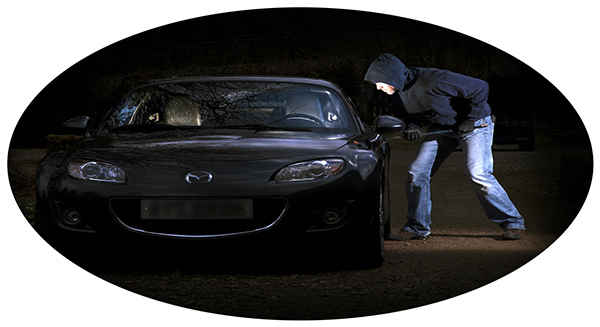What color car gets broken into the most?
When it comes to car break-ins, many factors influence the likelihood of a vehicle being targeted, including location, security features, and the perceived value of the vehicle. One common question is whether the color of a car impacts its likelihood of being broken into. While there’s no definitive answer, research and statistics provide some insights.
Black Cars

Why?
Black cars are more challenging to see at night, potentially making it easier for thieves to break in without being noticed.
They are also perceived as more luxurious, which might make thieves think there’s a higher likelihood of valuables inside.
Silver/Grey Cars
Why?
These colors are very common, making it easier for thieves to blend in with traffic and avoid detection.
The ubiquity of these colors means thieves can find parts more easily on the black market.
White Cars
Why?
Like silver and grey, white is a common car color, providing the same benefits for thieves.
However, white cars are generally more visible, which could be a deterrent, but they still rank high in break-in statistics due to their prevalence.
Red Cars
Why?
Red cars are often associated with sports cars, which might imply higher value.
Their bright color can be both an attraction and a deterrent, as they are more noticeable.
Blue Cars
Why?
Blue cars fall somewhere in the middle. They are less common than black, white, or silver but still relatively popular.
They don’t particularly stand out at night, making them a potential target.
Factors Influencing Car Break-Ins

- Location
Car break-ins are more frequent in areas with higher crime rates. Urban areas, poorly lit streets, and parking lots without security measures are more prone to such incidents.
- Vehicle Make and Model
Thieves often target certain makes and models that are easier to break into or have high resale value for parts.
- Visibility of Valuables
Cars with visible valuables are more attractive to thieves. Ensuring nothing is left in plain sight can reduce the risk.
- Security Features
Cars with advanced security features, example: alarms, immobilizers, and tracking systems, are less likely to be broken into.
- Car Color
Although car color may seem like a minor factor, there is some evidence to suggest it might influence break-in rates.
Interesting Facts


Insurance Premiums and Car Color
Contrary to what many people think, the color of a car does not have a direct impact on insurance premiums. Insurers base their rates on factors – example: the car’s make, model, age, and safety features.
Myth vs. Reality
There’s a myth that red cars get more speeding tickets. While some studies suggest red cars might be more noticeable, there’s no conclusive evidence that they are ticketed more often.
Car Color Trends
In the United States, white has been the most popular car color for several years, followed by black and silver. Trends in car color can influence break-in rates simply due to the prevalence of certain colors.
Psychological Impact
Car color can influence the owner’s driving behavior. For instance, black cars are often associated with elegance and power, while white cars are seen as clean and modern.
Seasonal Popularity
Some car colors are more popular in certain regions and climates. For example, white cars are more common in warmer climates as they reflect heat, while darker colors are preferred in cooler regions.
While car color might have some influence on the likelihood of a break-in, it’s more crucial to focus on other preventive measures like securing valuables, parking in well-lit areas, and investing in advanced security systems.
Understanding the broader context of vehicle security can help car owners make informed decisions and reduce the risk of theft.












